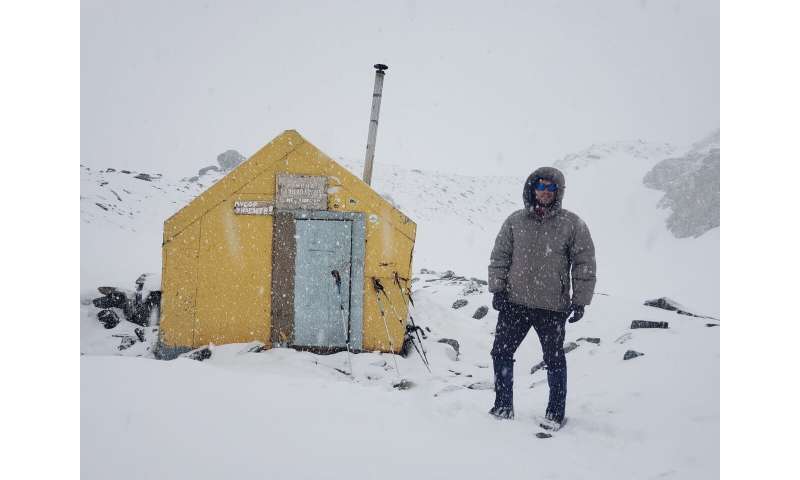TSU has installed new monitoring equipment on Aktru glaciers

During an expedition to Gorny Altai, scientists from the TSU Faculty of Geology and Geography delivered and installed a set of new equipment on some Aktru glaciers. The equipment will automatically measure the various parameters needed to monitor glacier mass balance. The data obtained will help not only to evaluate the dynamics of accumulation and mass loss but also to find out the reasons for changes.
- Aktru glaciers are the most indicative transformations of mountain glaciation and landscapes for the whole of Central Asia, - said Alexander Erofeev, head of the Laboratory of Glacioclimatology at the TSU Faculty of Geology and Geography. - It is in the highlands that the fastest response of the landscape to climate change occurs. In recent decades, Aktru has been undergoing active processes of glaciation degradation. So, for example, Small Aktru is the fastest melting glacier in Russia. Its condition is such that it is dangerous to be there and, unfortunately, all research is prohibited. Therefore, with our partners from the Institute of Geography of the Russian Academy of Sciences, it was decided to install glaciological monitoring equipment on the Left Aktru glacier. One of the main tasks for us is to maintain continuity and bring to the modern level the work of the monitoring system that existed here until the 1990s.
Until recently, only two glaciers remained in Russia with a continuous series of measurements, both located in the Caucasus. In May 2019, scientists from the TSU Faculty of Geology and Geography, along with glaciologists from the Institute of Geography of the Russian Academy of Sciences, restored constant monitoring on the Left Aktru—part of the Big Aktru, which fell apart into two in the second half of the 20th century. Currently, Left Aktru is the only glacier in Russia beyond the Urals whose data are transmitted to the World Glacier Monitoring Service (Zurich).
To do this, at the bottom of the Aktru Valley, in the area of the TSU scientific base, a Davis automatic weather station was installed, which continuously transmits temperature, wind speed, and rainfall parameters to a remote data reception server. The same weather station appeared on the side moraine of the Left Aktru near Blue Lake at an altitude of 2,850 meters.
On the main tributaries of the Aktru River, automatic meters of the acoustic noise level of the water flow, combined with automatic precipitation meters, are installed. On the tongue of the Left Aktru glacier, a portable automatic weather station Glacier (Lednik) now works to measure radiation balance and other parameters.
- The new equipment will help us to collect a whole series of data needed to track changes in the mass of the glacier: how it accumulates snow mass, firn, and ice in different periods, under what conditions and how quickly it loses them, - added Alexander Erofeev. - In October 2019, we calculated the balance of the Left Aktru glacier, and it was negative—the loss was 425 mm of water equivalent. 2020 is already breaking records in temperature, according to the forecast of many experts, it may become the warmest in the entire history of observations. In October, we will again calculate the mass of Left Aktru. It is possible that its losses will be even more pronounced.
According to the TSU scientist, if the trend continues and the glacier loses mass at the same rate, then by the second half of the 21st century, the Left Aktru will completely melt. However, one cannot state this with absolute certainty, because the glacier extinction rate can both decrease and increase. This will depend on two main parameters: the amount of precipitation in the form of snow, due to which the glacier increases its mass, and air temperature. Along with this, solar radiation plays an important role, data about which scientists now receive from the Glacier (Lednik) automatic station.
Researchers will also receive new information thanks to special sensors developed at the request of TSU by the university's partner, the Institute for Monitoring Climate and Ecological Systems of the SB RAS, for measuring the acoustic noise level of a water stream. This new method of measurement has proven itself in the extreme hydrological conditions of the Altai highlands, where traditional methods of measuring water flow are either not available or ineffective.
According to Alexander Erofeev, Left Aktru is a representative glacier for many other inland continental glaciers. Therefore, the data on transformations will also be indicative of how other North Asia mountain glaciers "feel".
Provided by Tomsk State University